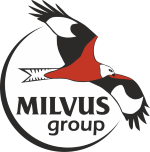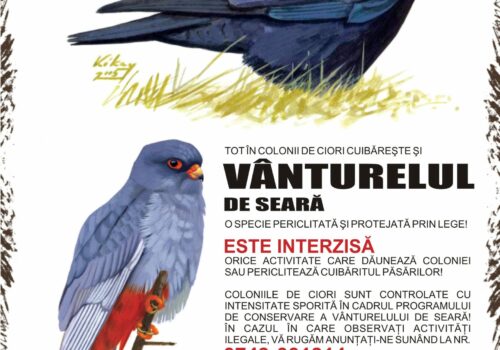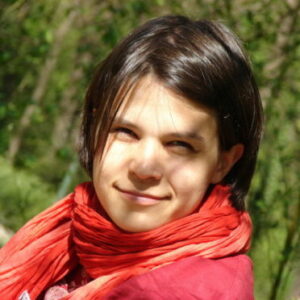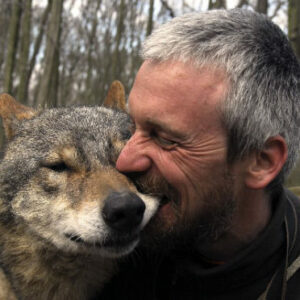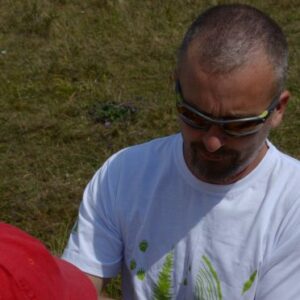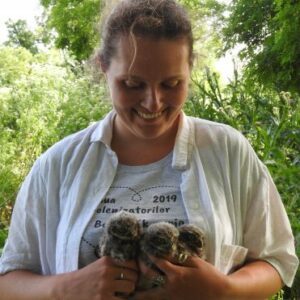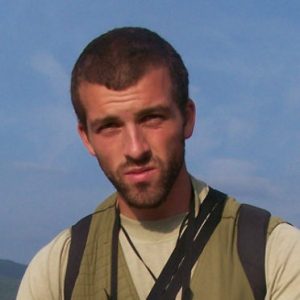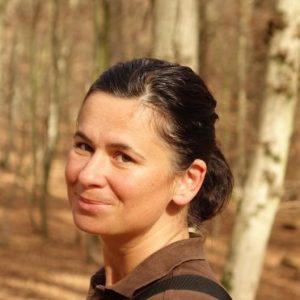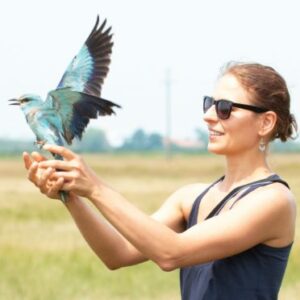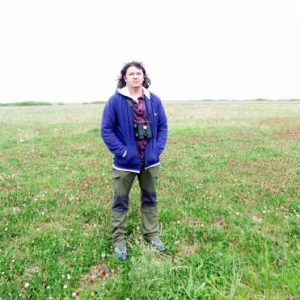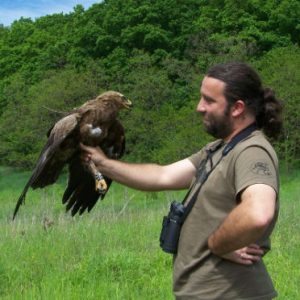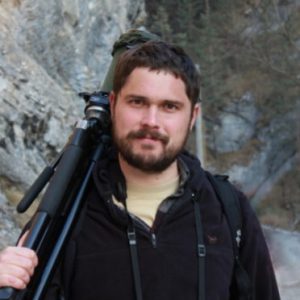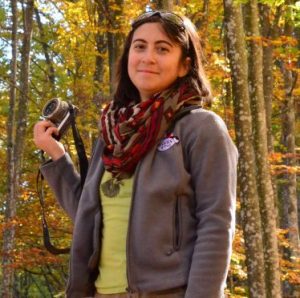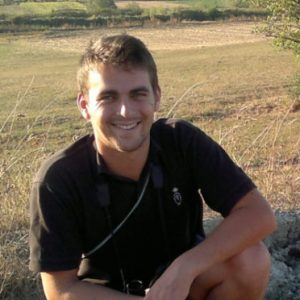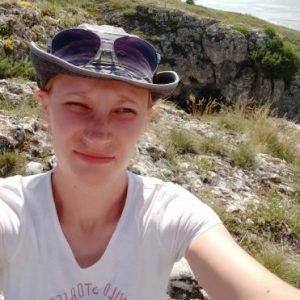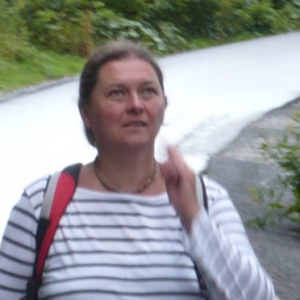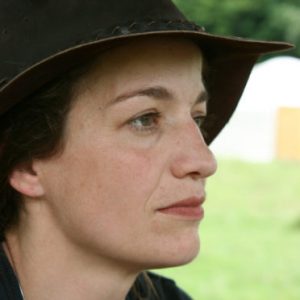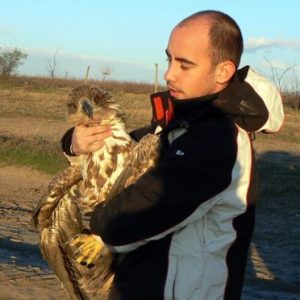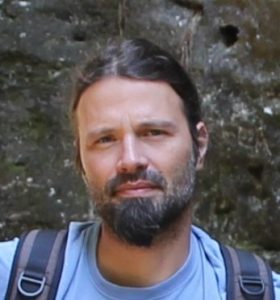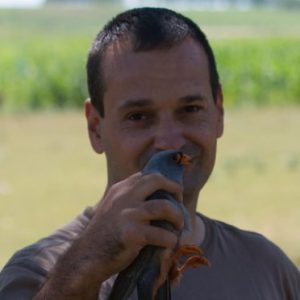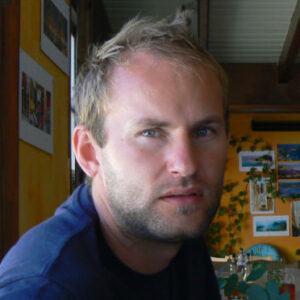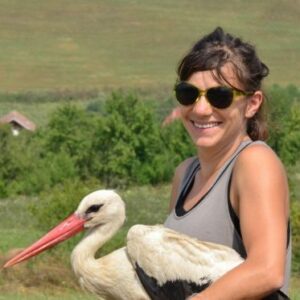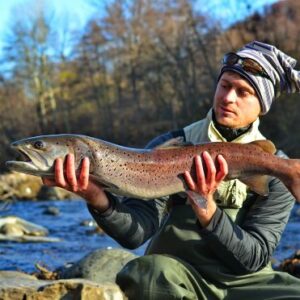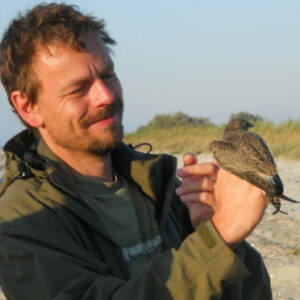[singlepic id=470 w=200 h=250 float=left]The Agreement on the Conservation of African-Eurasian Migratory Waterbirds (AEWA) is the largest of its kind developed so far under CMS (Convention on the Conservation of Migratory Species of Wild Animals, also known as the Bonn Convention), and it covers 255 species of birds ecologically dependent on wetlands for at least part of their annual cycle. It was concluded in 1995 in the Netherlands, and entered into force on 1 November 1999. Since then the Agreement is an independent international treaty. The agreement covers 118 countries from Europe, parts of Asia and Canada, the Middle East and Africa. Romania has signed it on 01.10.1999, and ratified it through the Law nr. 89/2000.
The Lesser White-fronted Goose – Anser erythropus (LWfG) is one of the most endangered bird species in the Western Palearctic. The global population of LWfG has declined rapidly since the middle of the 20th century. The decrease in numbers has been accompanied by fragmentation of the breeding range and is continuing to affect all populations, giving rise to fears that the species may go extinct. Overhunting and habitat loss are considered to be the main threats. There is an estimate of decrease in numbers in the range of 30% to 50% during the last decade. As the species is highly similar to the White-fronted Goose – Anser albifrons (WfG), and in many cases LWfG specimens occur in large WfG flocks, the difficulty of identification of LWfG is one of the major problem, in the term of detecting the most important staging areas, and illegal hunting as well.
Lesser White-fronted Geese are long-distance Palearctic migrants, currently breeding discontinuously in the sub-arctic zone from northern Fennoscandia to eastern Siberia. The wintering/staging areas and migration routes are only partially known. Four main subpopulations can be recognised:
-
Fennoscandian population (breeding in the Nordic countries and the Kola Peninsula);
-
Western main population (nesting in northern Russia to the west of the Taimyr
Peninsula);
-
Eastern main population (nesting from the Taimyr Peninsula eastwards and wintering
in China).
The fourth subpopulation has been created by the release of captive-bred birds within the former range of the Fennoscandian population in Sweden and by the establishment of a human-modified flyway.
[singlepic id=469 w=250 h=200 float=left]Within the frame of AEWA a Single Species Action Plan (SSAP) has been prepared concerning the LWfG, which deals with conservation of two of the three wild populations – namely the Fennoscandian population and Western main population – given that the Eastern main population does not occur within the AEWA Agreement. The role of the AEWA LWfG International Working Group is to coordinate and catalyse the implementation of the LWfG SSAP, to stimulate and support Range States in the implementation of the SSAP, and to monitor and report on the implementation and the effectiveness of the SSAP. Between 30.11-01.12.2010 a first meeting of the Working Group has been held in Helsinki, Finland. Romania was represented by the Milvus Group and the Romanian Ornithological Society (SOR), however no designated representatives of national state authority in charge of the implementation of AEWA were present at the meeting.
Several issues have been discussed at this meeting, as following:
-
Review and adopt the Terms of Reference for the Working Group;
-
Agree on Working Group reporting practices and budgetary issues;
-
Discuss Working Group activities as specified in the Terms of Reference;
-
Determine priority measures for the LWfG on the basis of the International SSAP;
-
Discuss and determine most urgent conservation actions based on the outlined priority measures;
-
Discuss funding opportunities for urgent conservation actions in line with the defined priority measures.
For further information feel free to access the links below:
AEWA http://www.unep-aewa.org/about/index.htm
LWfG IWG documents http://www.unep-aewa.org/meetings/en/lwfg_iwg/meeting1/lfwg_iwg_1.htm
AEWA LWfG SSAP http://www.unep-aewa.org/activities/working_groups/lwfg/lwfg_ssap_130109.pdf
LWfG factsheet http://www.birdlife.org/datazone/speciesfactsheet.php?id=377
Lesser White-fronted Goose Life Project http://www.wwf.fi/english/finland/lesser_white_fronted/
Portal to the LWfG http://www.piskulka.net/index.htm
